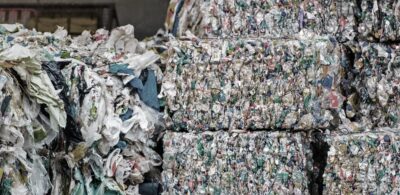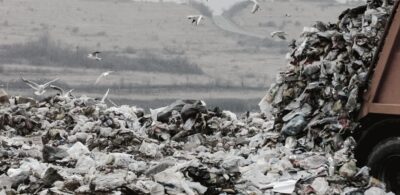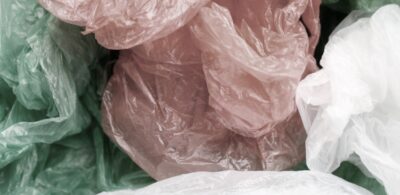Talking Trash: What you need to know about Queensland's Waste Levy
26 February 2019
In 2016-17, 912,000 tonnes of waste were transported from other States for disposal in Queensland.[1] In response, the Queensland Government has passed legislation to introduce a waste levy commencing in July 2019.
When will the levy commence?
The levy will commence on 1 July 2019.
What is the waste levy zone and where does it apply?
The waste levy applies to waste generated in or disposed of in the 39 local council areas designated by regulation as in the ‘waste levy zone’. The zone includes all of South-East Queensland and covers 90% of Queensland’s population.
The levy will be charged on waste produced in the non-levy zone if it is disposed in the levy zone. Any waste brought from interstate will be charged the levy, regardless of where it is disposed of in Queensland.
The levy will not apply to waste generated for an environmentally relevant activity that is disposed of at a facility operated for the sole purpose of disposing that waste.
Who will pay the levy?
The levy will be paid by the operator of the waste disposal site. Presumably, operators will pass on the levy to disposers.
Ratepayers should not face any additional costs for household waste. The State government has promised to pay a 105% rebate to local councils for the cost of disposing of waste. However, the State government will withhold these payments if councils do not inform ratepayers of the rebate or provide false or misleading information about it.
Is construction waste subject to the levy?
The definition of “waste” includes “left over … from an industrial, commercial, domestic or other activity”. “Levyable waste” is defined as “waste, other than exempt waste, that is delivered to a levyable waste disposal site.”
Construction waste would likely be regarded as left over from a commercial activity, classifying it as waste. Except where construction waste is “exempt waste” (such as asbestos-contaminated waste and dredge spoil, which would be subject to other legislative disposal requirements, or clean earth), construction waste will therefore be subject to the waste levy at the point of disposal.
What do disposers need to do?
Disposers must advise disposal site operators of:
- the amount of each type of waste (including exempt waste); and
- whether the waste was generated inside or outside the levy zone and the respective amounts.
Failing to disclose this information or knowingly providing misleading information may result in a fine of up to $39,165.
What is the levy rate?
The levy rate will vary depending on the kind of waste that is disposed. The rate will be set by regulation and will increase by $5 per year each year. The following rates will initially apply:
Type of waste | Waste levy rate—2019-20 | Waste levy rate—2020-21 | Waste levy rate—2021-22 |
General waste: commercial waste, domestic waste, recyclable waste and any other excluding regulated waste | $75 per tonne | $80 per tonne | $85 per tonne |
Category 1 regulated waste | $155 per tonne | $160 per tonne | $165 per tonne |
Category 2 regulated waste | $105 per tonne | $110 per tonne | $115 per tonne |
Category 1 and Category 2 regulated waste are defined in Schedule 7 of the Environmental Protection Regulation 2008 (Qld).
Where different types of waste are mixed, the disposer will be charged for all of the waste at the rate of the waste attracting the highest rate.
Discounts for recycling activities
A person who conducts a recycling activity may apply for a 50% discount to be charged on recycling waste.
However, an application will only be successful if the person meets the ‘recycling efficiency threshold’. For example, a paper and cardboard recycling operation must recover 65% of the materials to be eligible for the discount.
A person may still be eligible for the discount if it is not reasonably practicable for them to meet the threshold and they introduce efficiency measures to improve their recovery rate.
Is any waste exempt from the levy?
The following categories of waste will be automatically exempt from the levy:
- waste produced as a result of natural disasters;
- asbestos-contaminated waste;
- litter and illegally dumped waste collected by the State government and local councils;
- serious local event waste (defined as waste caused by an event that causes a serious disruption in a community requiring a significant coordinated response from local government and other entities);
- dredge spoil (including acid sulfate soils in the dredge spoil);
- waste collected by local government or plantation licensee under the Forestry Act 1959 (Qld); and
- clean earth (including acid sulfate soils in the clean earth).
Some waste may be granted an exemption, including:
- waste from for charitable recycling entities;
- community events targeting waste reduction;
- contaminated land;
- waste necessary for the operation of a waste disposal site;
- biosecurity waste; and
- serious local event waste (where waste falls outside the automatic exemption).
[1] Innovation, Tourism Development and Environment Committee. 2018. Question Taken on Notice No.1. Available here.
Authors

Senior Associate
Tags
This publication is introductory in nature. Its content is current at the date of publication. It does not constitute legal advice and should not be relied upon as such. You should always obtain legal advice based on your specific circumstances before taking any action relating to matters covered by this publication. Some information may have been obtained from external sources, and we cannot guarantee the accuracy or currency of any such information.



